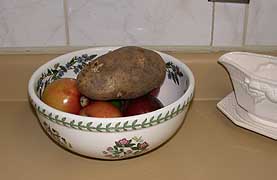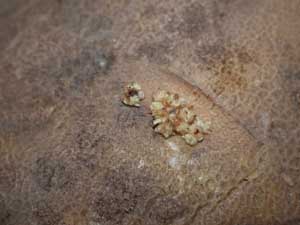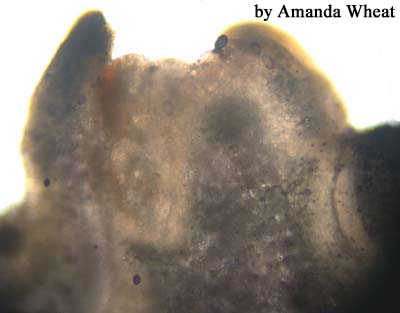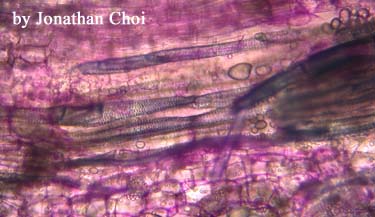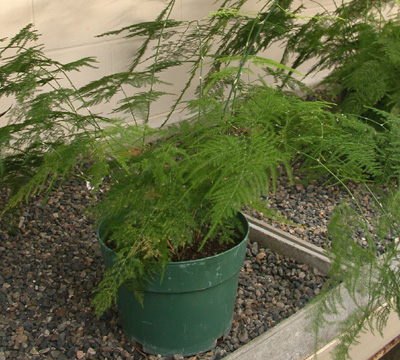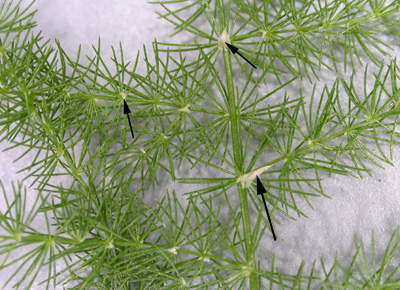STEM MODIFICATIONS
1. Function – Storage
Solanum tuberosum
Solanum tuberosum (potato) is a modified stem called a tuber.
When you look closely at a potato you can see the nodes (eyes) from which new shoots arise.
In this picture you can see some shoots growing from the eye of a potato (courtesy of “Shona’s Kitchen”, picture far right)
Starch is stored in the potato tuber. The picture below is a section through the potato stained with IKI.
This is a section through the apical meristem of one of the “eyes” of a potato…looks like a typical shoot apical meristem.
This section was stained with toluidine blue and shows the vascular tissue that connects the developing bud with the rest of the tuber (stem).
Carnegia gigantea
Cacti such as this sanguaro cactus (Carnegia gigantea) store water in their stems.
2. Function – Photosynthesis
Stems and roots may be altered to serve as photosynthetic organs in place of or as a supplement to the leaves. Branching, leaflike stems called cladophylls may be the chief organs of photosynthesis in plants which lack leaves, or have reduced, non-photosynthetic leaves. Roots of epiphytic orchids may develop a chlorophyllous layer and serve as a supplemental, or even as the only, site of photosynthesis for the plant.
Asparagus (Asparagus fern)
Although the photosynthetic structures look like leaves they are actually modified stems.
The leaves are inconspicuous and scalelike (indicated with arrows).
Asparagus fern is really not a fern at all…in fact here is a picture of some young shoots…look familiar????
1. EARLY DEVELOPMENT OF BEAN
2. STEM APICAL MERISTEM
3. PRIMARY TO SECONDARY GROWTH
4. MONOCOT STEM
5. STEM MODIFICATIONS
BACK TO STEM FRONTPAGE

